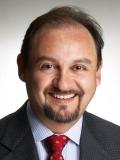Defibrillation
Defibrillation is an emergency treatment for cardiac arrest and life-threatening arrhythmias, or abnormal heartbeats. Defibrillation can also be performed as a scheduled medical intervention to treat an abnormal heart rhythm that has not responded to conventional medical therapy. It delivers an electrical shock to restore a normal heartbeat. The procedure involves placing sticky electrodes or paddles to shock the heart. People are usually unconscious or sedated when defibrillation is performed.
Doctors, nurses, paramedics, and other healthcare providers can perform defibrillation. A layperson might perform it if you are in a public place where an automatic external defibrillator (AED) is available.
Reasons for Defibrillation
Defibrillation treats cardiac arrest and life-threatening ventricular arrhythmias. These abnormal heartbeats occur when the ventricles – or lower chambers of your heart – beat extremely fast and unevenly. When the ventricles do little more than quiver or shake, they can’t pump enough blood to your brain and body. Without defibrillation, death typically occurs within 5 to 10 minutes.
Risks and Complications
There are some risks with defibrillation. However, the life-saving benefit far outweighs any side effects. Risks and potential complications include:
- Death or damage to the heart muscle tissue
- Skin burns
- Other less serious cardiac arrhythmias
Recovery and What to Expect
After defibrillation, you will need close evaluation and monitoring in a hospital critical care setting. You will also need other treatments to stabilize your condition and treat the underlying cause of the arrhythmia.
Recovery time varies greatly depending on the underlying cause and your general health. Talk with your doctor about your recovery and when you can return to normal activities.
It is common to experience many emotions, including anxiety and fear, after a life-threatening event. Some people find it helpful to talk to a pastor, therapist, or other professional support person.
Defibrillation can save your life, but it will not cure heart disease or other underlying causes of the arrhythmia. You will need to make changes to your diet and lifestyle as part of your treatment plan.
This may include:
- Being more physically active
- Controlling your blood pressure and cholesterol
- Eating a heart-healthy diet
- Maintaining a healthy weight
- Quitting smoking
- Reducing stress
Talk with your doctor about your diagnosis and treatment plan. Ask how it will affect your everyday life.





